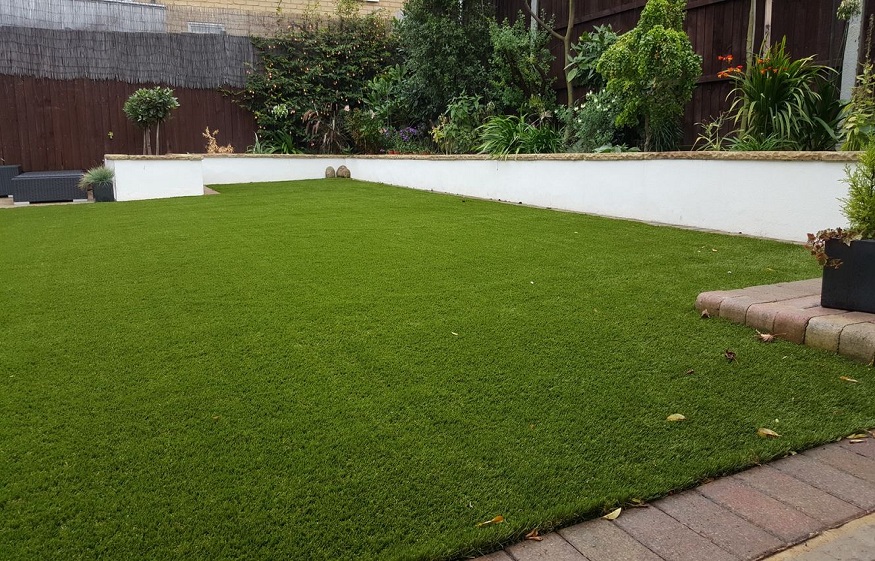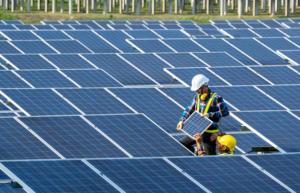
The Ultimate Guide to Artificial Grass: Everything You Need to Know
Understanding Artificial Grass and Its Benefits
If you’re looking to revamp your outdoor space with a lush, green lawn that requires minimal maintenance, artificial grass might just be the solution you need. Also known as synthetic turf or fake grass, artificial grass has come a long way from its humble beginnings and is now a popular choice for homeowners, businesses, and public spaces. In this blog, we will delve into the benefits of artificial grass.
What is Artificial Grass?
Artificial grass is a synthetic alternative to natural grass, designed to replicate the look and feel of a real lawn. It is made from various materials, including polyethylene, polypropylene, or nylon, which are durable, weather-resistant, and non-toxic. The blades of artificial grass are typically constructed to be soft and lifelike, providing a realistic appearance that can be mistaken for natural grass at first glance.
The Evolution of Artificial Grass
Artificial grass has a fascinating history that spans several decades. Initially developed in the mid-20th century, it was primarily used for sports fields and indoor arenas. Over time, advances in technology and materials led to the creation of more sophisticated artificial turf that resembled natural grass more closely.
Today, artificial grass is used in a wide range of applications, from residential lawns, playgrounds, and commercial landscapes to sports fields and rooftop gardens. Its versatility, low maintenance requirements, and eco-friendly features have contributed to its growing popularity.
The Benefits of Artificial Grass
Low Maintenance
One of the most appealing aspects of artificial grass is its minimal maintenance needs. Unlike natural grass, which requires regular mowing, watering, and fertilizing, synthetic turf remains green and vibrant all year round without the hassle of constant upkeep. Say goodbye to weekends spent pushing a lawnmower, and hello to more free time to enjoy your outdoor space.
Water Conservation
In regions facing water scarcity or strict water restrictions, artificial grass can be an excellent water-saving solution. Since it doesn’t need regular watering to thrive, it significantly reduces water consumption, contributing to a more sustainable environment.
Durability and Longevity
Artificial grass is designed to withstand heavy foot traffic, making it an ideal choice for areas that receive frequent use, such as sports fields and playgrounds. Additionally, high-quality artificial grass can last for many years, maintaining its lush appearance even after prolonged use.
All-Weather Use
Natural grass lawns often struggle to maintain their beauty during extreme weather conditions such as heavy rain or scorching heat. On the other hand, artificial grass is engineered to endure various weather elements, including rain, snow, and high temperatures, without losing its color or integrity.
Environmentally Friendly
Contrary to the belief that synthetic turf harms the environment, modern artificial grass is designed with sustainability in mind. Many artificial grass products are made from recycled materials, and their water-saving properties contribute to a greener ecosystem by reducing overall water consumption.
The Ultimate Guide to Artificial Grass: Installation, Tips, and Common Misconceptions
Installation Process
While some homeowners may consider installing artificial grass as a DIY project, it is generally recommended to seek professional installation to ensure a successful and long-lasting outcome. The points below will help you learn how to lay artificial grass.
- Site Preparation: The first step is to prepare the area where the artificial grass will be installed. This includes clearing the existing vegetation, rocks, and debris. The ground may also be compacted and levelled to create a smooth and even surface.
- Weed Barrier: To prevent weed growth, a weed barrier fabric is laid on the prepared ground before installing the artificial grass.
- Base Material: A base material, typically composed of crushed rock or decomposed granite, is added and compacted to create a stable foundation for the artificial grass.
- Turf Installation: The artificial grass rolls are carefully laid out and trimmed to fit the desired area. Seams are joined securely, and the edges are anchored to prevent movement.
- Infill Application: Infill materials, such as silica sand or rubber granules, are spread across the artificial grass blades to enhance stability, provide cushioning, and support the grass fibres.
- Brushing and Watering: Finally, the artificial grass is brushed to ensure the fibres are upright and to evenly distribute the infill. Watering may be required to settle the infill and achieve optimal aesthetics.
Tips for Choosing the Right Artificial Grass
When selecting artificial grass for your project, consider the following factors to ensure you make the best choice:
- Quality: Invest in high-quality artificial grass with a realistic appearance, soft texture, and excellent durability. Cheaper options may not provide the same longevity or natural feel.
- Usage: Identify the primary purpose of the artificial lawn. For example, different types of grass are suitable for residential lawns, sports fields, pet areas, or commercial landscapes.
- Pile Height and Density: The pile height (the length of the grass blades) and density (number of blades per square inch) influence the appearance and comfort of the artificial grass.
- UV Stability: Look for UV-resistant artificial grass to ensure it maintains its colour and integrity even in prolonged sun exposure.
- Drainage: Opt for artificial grass with efficient drainage capabilities to prevent waterlogging and ensure proper water runoff.
Debunking Common Misconceptions
- Toxicity: Some people express concerns about the chemicals used in artificial grass. However, reputable manufacturers produce artificial grass that is non-toxic and safe for both humans and pets.
- Environmental Impact: Modern artificial grass is designed to be eco-friendly, using recycled materials and contributing to water conservation.
- Hot Surface: While it’s true that artificial grass can become warmer than natural grass under direct sunlight, choosing lighter-coloured turf and using appropriate infill materials can mitigate this issue.
- Maintenance-Free: While artificial grass requires significantly less maintenance than natural grass, some minimal upkeep is still necessary, such as occasional brushing and debris removal.
In conclusion, artificial grass offers a plethora of benefits, from low maintenance and water conservation to durability and year-round appeal. By understanding the installation process, considering essential factors when choosing the right artificial grass, and dispelling common misconceptions, you can confidently embark on your journey to transform your outdoor space with this eco-friendly and attractive alternative.
We hope this blog has provided you with valuable insights into the world of artificial grass. Whether you’re looking to create a pet-friendly backyard, a safe play area for children, or a beautiful landscape for your property, artificial grass can be a game-changer in achieving a vibrant and hassle-free outdoor environment. Happy landscaping!


